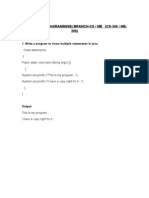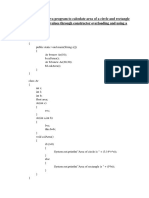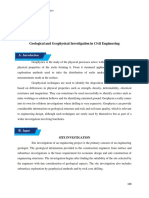0% found this document useful (0 votes)
20 views4 pagesJava Lab Assignment 6
The document contains several Java programming exercises, including methods for displaying the middle character of a string, counting vowels, computing the sum of digits, and demonstrating method overloading and constructors. Each exercise includes code snippets and explanations for implementation. The exercises cover fundamental Java concepts and provide practical coding examples.
Uploaded by
darkemperor687Copyright
© © All Rights Reserved
We take content rights seriously. If you suspect this is your content, claim it here.
Available Formats
Download as PDF, TXT or read online on Scribd
0% found this document useful (0 votes)
20 views4 pagesJava Lab Assignment 6
The document contains several Java programming exercises, including methods for displaying the middle character of a string, counting vowels, computing the sum of digits, and demonstrating method overloading and constructors. Each exercise includes code snippets and explanations for implementation. The exercises cover fundamental Java concepts and provide practical coding examples.
Uploaded by
darkemperor687Copyright
© © All Rights Reserved
We take content rights seriously. If you suspect this is your content, claim it here.
Available Formats
Download as PDF, TXT or read online on Scribd
/ 4






















































































